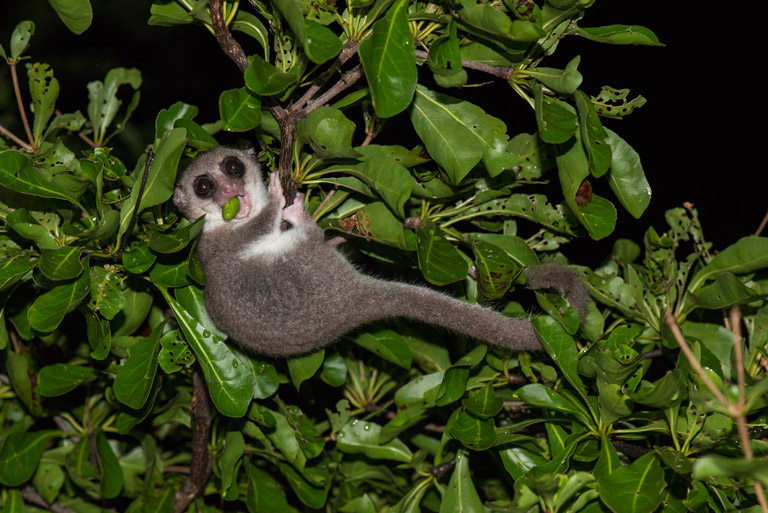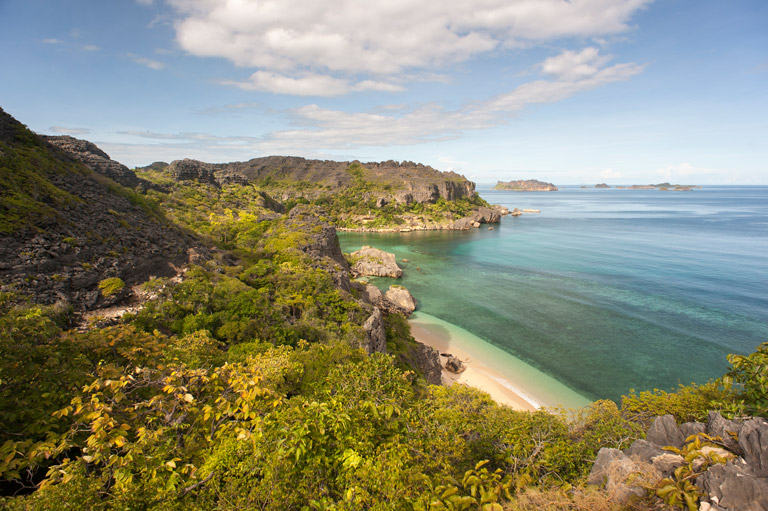- A University of Kent conservation researcher and his spouse recently stumbled upon an unusual dwarf lemur on a Madagascar out island.
- The species, possibly new to science, exhibits dwarfism and tameness, characteristics common to remote species inhabiting small isolated islands.
- The discovery will require further investigation by researchers to determine if the lemur is a new species; and if it is unique, to observe and describe it.

Dr. Charlie Gardner, a conservation researcher at the University of Kent, UK and his wife, Louise Jasper, a nature photographer, have lived on the island of Madagascar for a decade, and have had the good fortune of working in many of the nation’s wildest places. At the end of two challenging projects in 2014, they decided to reward themselves with a vacation to an out-of-the-way place. So in April 2015, they headed to Nosy Hara, an uninhabited island off the northwest coast of Madagascar.
“Nosy Hara was near the top of our list because it is so remote, little visited and unspoilt, and we had heard great things about it from friends,” Gardner told Mongabay in an email interview.
Sea turtles are still abundant on the isolated island, and they nest on the beaches. The coral reefs are vibrantly healthy, because there is very little stress from fishing. The island is also home to amazing animals like the Brookesis micra, the world’s smallest chameleon, and the Critically Endangered Madagascar fish eagle.
What the couple couldn’t have guessed was that they were about to have the experience of a lifetime — the discovery of what may be a new species. Dr. Gardner and his wife went out on a night walk, a tradition they keep in any new forest they visit in order to spot nocturnal reptiles and amphibians. On one such walk, they came face-to-face with a seemingly unique dwarf lemur (Cheirogaleus).

Soon after their first sighting, they spotted another individual, then four more the following night. As rare as these lemurs appeared to be, what fascinated the vacationing couple most was the even rarer behavior the animals exhibited.
“It is always exciting to see a lemur in the wild, and all the more so when you aren’t expecting to. It was a very special experience, but not because we thought it might be a new species, as we weren’t really aware of that possibility at the time, “ Gardner explained. “The real excitement came from being able to approach them so closely — it is a rare treat to see a dwarf lemur so close, and to see such a beautiful wild animal from just a couple of feet is an indescribable experience.”
The lemurs were incredibly tame, coming close enough to be touched, and they were very small, even for dwarf lemurs. These characteristics made the couple wonder if these primates were restricted to only this particular island, because dwarfism and predator naiveté are characteristics of island species.
Dwarfism is common among animals that have been confined to an island for a long period of time, an evolutionary adaptation born out of an ecosystem’s limited size and food supply. Apparent tameness can be a sign that a species has long been isolated, because it lacks fear of predators it has never encountered before.

While there are several threatening snake species on the island that Gardner suspects the lemurs would fear, there are no mammal predators on Nosy Hara. Even the bird species that might normally threaten a small lemur do not live on the island.
If this seemingly friendly lemur is found to be a new species, chances are Gardner will not have the honor of naming it — that task is typically left to the researchers who write up the official species description. But that hasn’t stopped Gardner and his wife from thinking about possible options. Given the chance, they would name it after Nosy Hara —special because it is almost completely unknown.
“We thought that naming a species after the island would help shine a light on it and help put it on the map, in particular to attract more conservation funding,” Gardner suggested, “Another idea would be to hold an auction for the naming rights to raise money for conservation of the island, or for Madagascar more broadly.”

Dr. Gardner’s research for the University of Kent is focused on protected areas and how to best manage them, strategies ranging from better governance, to equity issues, applied ecology and anthropology. His interest in Madagascar grew out of that country’s effort, begun in 2003, to majorly expand its protected areas.
Although Gardner has done a little research on lemurs in the past, he is not a primatologist. He is however fascinated by these animals, as he is with birds and snakes, and all of Madagascar’s species — a passion that originally brought him to the country. However, he notes, researching wildlife doesn’t necessarily tell us all we need to know about how to conserve it.
“Conservation is a human problem, not an ecological one, so I rarely carry out research about biodiversity itself — I am much more interested in understanding the threats that biodiversity faces in order to develop and implement appropriate [conservation] strategies,” Gardner told Mongabay.

The conservation researcher writes a lot of short notes for scientific journals documenting the forest observations that he and his wife make, with the hope that this anecdotal data will help researchers in their investigations. This is the case with the dwarf lemurs of Nosy Hara as well. After observing these unique animals, and learning that no one had likely seen them before, the couple published a paper to alert the scientific community of the dwarf lemur’s existence.
“The real work hasn’t even started yet,” said Gardner referring to the research needed to determine whether the species is new, describe it, record its behavior, and protect its future. “We hope our discovery will stimulate other researchers to come and investigate whether it really is a new species or not.”


